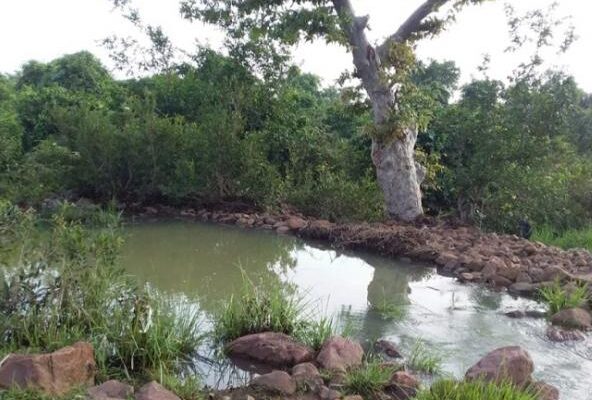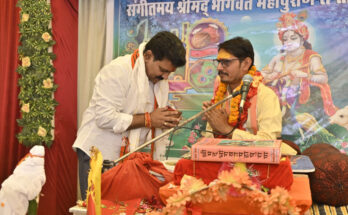Raipur, 06 February 2022. According to the intention of Chief Minister Bhupesh Baghel, the effect of Narva, Garwa, Ghurva, Bari i.e. Suraji Gaon Yojana, run by the Chhattisgarh Government, to strengthen the rural economy of the state is now visible. Narva development, one of the four important components of Suraji Gaon Yojana, is improving the ground water level in rural areas. The narva (nala) which is almost dead has now come back to life. The treated drains now have water more or less throughout the year. Taking advantage of this, the farmers on the banks of the drain are now producing double crops.
This program of Narva development in Chhattisgarh was started about 3 years ago. So far, 2477 drains in the state are being treated through Panchayat and Rural Development Department and Forest Department. For the prevention of water in these rainy drains, treatment works worth about Rs 614 crore have been done, which includes construction of structures like stop dam, ardan boulder check, gully plug, brush hood. Now more or less water logging remains in the treated drains till April-May. The advantage of this is that the water level of wells and hand pumps in the villages around the treated drains has increased significantly. With the onset of the summer season, the situation of decline in the water level of wells and hand pumps has not only stopped, but is also seeing an increase in it.
It is clearly revealed from the survey report of water level of wells in treated drain areas in different areas of the state that the water level of wells has increased from 0.20 meters to 1.60 meters. The water level in Shri Ude Pradhan’s well was 4.60 meters in June 2019 due to the treatment of Halfali Narva located in Nawagarh area of Bemetara district, which has come down to 3 meters in June 2020 after the treatment done in Halfali drain. Similarly, after the treatment of hundreds of drains like Chirkoli Nala in Manendragarh, Chaurbahar Nala in Kondagaon, Jhura Nala in Narharpur, Budan Nala in Bhanupratappur, the water level of wells and hand pumps of that area increased from 0.20 meters to 1.60 meters. Is.
The soil moisture content has also increased in the area of treated drains in the state. After the treatment of Mandri Nala of Kanker, the percentage of moisture in the soil of that area has increased by 2.90. Moisture in the soil of Naharpur Nala area has increased by 2.85 percent and in Budan Nala area by 1.90 percent. Talking about Pathargadi in Mungeli district, the water level of the drain has increased by 10 feet from the check dam built under the Narva scheme there. Taking advantage of this, farmers have started growing double crops. On average, the Kabirdham district of the state receives less rainfall. Usually, during summer, the problem of water and drinking water remains in the rural areas of Kabirdham district. Now the situation has started changing there with the Narva Development Program. Under Narva Development Programme, 1.80 km canal has been constructed from Mahidbra reservoir in Kabirdham district, farmers have started getting irrigation facility, due to which farmers have now started cultivating paddy and tur instead of Kodo, Kutki.
Mr. Vishwanath Verma, a farmer of Ramtala village in Mungeli district, says that during the rainy season, water was available from the bore well, but during the summer season, water was scarce and there was a lot of problem in farming. Tomato production was also less due to lack of water, now all the problem has been solved by the construction of dubari in the field. In the summer season, tomatoes are cultivated with the available water in Dabri.
Raipur: Improved water level of wells and hand pumps due to Narva development




